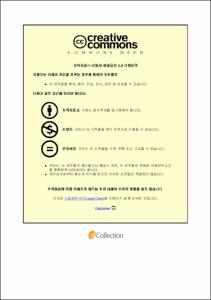Continuum Flexible Robot with Multiple Curvature
- Title
- Continuum Flexible Robot with Multiple Curvature
- Alternative Title
- 여러 곡률을 갖는 연속체로 이루어진 휘어지는 로봇
- Author(s)
- Bak, Seong Ho
- DGIST Authors
- Bak, Seong Ho ; Hong, Jae Sung
- Advisor
- Hong, Jae Sung
- Co-Advisor(s)
- Joung, Sang Hyun
- Issued Date
- 2016
- Awarded Date
- 2016. 8
- Type
- Thesis
- Subject
- continuum flexible robot ; curvature ; curvature ratio ; kinematics ; 연속체로 된 휘어지는 로봇 ; 곡률 ; 곡류 비 ; 기구학
- Abstract
- The continuum flexible robots are used at various fields due to characteristics of relatively more flexible than conventional rigid link-joint robots. Among many applications, this paper researches of the continuum flexible robot which can be apply with ballooning orbital floor blowout surgery. When the balloon support the fracture under the fractured orbital floor, the completeness of the surgery grows though this procedure can be performed by highly trained few surgeons. The core problem is the tip of the robot should bend most to get into the side pathway in narrow space by 1-DOF. The conventional flexible robots suppose it has equal curvature in entire flexible part or are got restrict of their structures for constant curvatures. For supplementing those problems, this paper designed the continuum flexible robot which has larger curvatures at the tip without increasing the number of actuators and analyzed the curvature ratio, the curvature according to the length of pulled wires and kinematics. The continuum flexible robot was tested by pulled wire from 0mm to 15mm and then was compared with measured value and estimated value. ⓒ 2016 DGIST
- Table Of Contents
-
I. INTRODUCTION--
1.1 Orbital floor blowout--
1.2 Previous researches of the flexible robot--
1.3 Research contents and goal--
II. DESIGN--
2.1 Flexible part--
2.2 Driving part--
2.3 Electronic devices--
III. KINEMATICS ANALYSIS--
3.1 Relationship between l_pull and c_p, c_d, Φ--
3.1.1 Kinematics model of each springs--
3.1.2 Stress analysis and relationship of the spring constant k and the curvature of a spring c--
3.1.3 Wire length of the compressed part of spring in proximal part l_(i,p) and distal part l_(i,d)--
3.1.4 Calculate the curvature and the angle of curvature Φ by two adjacent wire--
3.2 Relationship between c_p, c_d, Φ and θ, d--
3.3 Relationship between c, Φ and θ, d--
IV. EXPERIMENTS AND RESULTS--
4.1 Experiment method--
4.2 Comparing estimated value and measured value--
V. DISCUSSION AND CONCLUSION
- Degree
- Master
- Department
- Robotics Engineering
- Publisher
- DGIST
- Related Researcher
-
-
Hong, Jaesung
- Research Interests Surgical Navigation; Surgical Robot; Medical Imaging; 영상 유도 수술 로봇; 수술 내비게이션
-
- Files in This Item:
-
 기타 데이터 / 2.13 MB / Adobe PDF
download
기타 데이터 / 2.13 MB / Adobe PDF
download
- Appears in Collections:
- Department of Robotics and Mechatronics Engineering Theses Master



